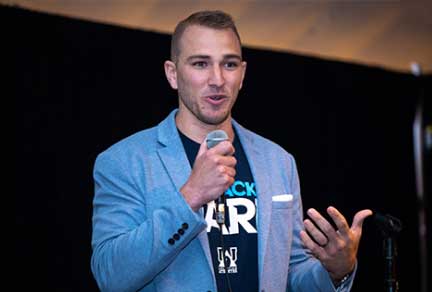Defining success for retinal gene therapy patients and payers
Parexel hosted an expert panel at the October 2025 American Academy of Ophthalmology (AAO) in Orlando to discuss the "real-world readiness" of gene therapies, offering critical advice for companies developing treatments for inherited retinal diseases (IRDs) and neovascular age-related macular degeneration (nAMD). Moderated by Parexel’s Bharti Arya, MRCOphth, Executive Director and Therapeutic Area Head of Ophthalmology, the panel included Sunil Gupta, M.D., Founder of Retina Specialty Institute and Co-Founder/CMO of US Retina, Patrick Symmonds, Pharm D., Vice President at Health Advances (a Parexel subsidiary), and Bryan L. Lam, M.D., Professor and Director at the Bascom Palmer Eye Institute.
Measuring real-world success and function
The expert panel on gene therapy in retinal diseases began by discussing the limitations of the commonly used endpoint, the Multi-Luminance Mobility Test (MLMT), which is necessary but challenging for clinical trials and impractical for routine clinical practice. The test, a maze with obstacles under varying light conditions, takes half a day to complete and is very taxing for patients. Instead, clinicians rely on tools that can be consistently measured, such as the full-field stimulus test (FST) and selective use of best-corrected visual acuity (BCVA), combined with structured patient- and parent-reported observations of function.
Panelists agreed that while MLMT might be currently required by regulators, there may be opportunities to also incorporate outcome measures that are feasible, clinically meaningful, and provide the objective data payers require, such as:
- FST: Despite some test-retest variability, the FST is widely used in clinical practice and is emerging as a key assessment for IRD patients to facilitate reimbursement strategies.
- Real-world function: While BCVA alone may not show a strong effect in all IRD therapies, vision stability or patient-reported functional improvements are crucial. The panelists emphasized that anecdotal improvements, such as a teenager being able to use their iPhone more effectively, are powerful indicators of clinical success.
- Future metrics: Beyond current tools, the industry is exploring alternatives to the MLMT, such as virtual reality (VR) mobility testing. Although VR testing is not yet validated, many sponsors are exploring its potential. Additionally, capturing indirect but meaningful measures, such as improved sleep from better circadian rhythms or enhanced daily functioning, assessed with an accelerometer, could demonstrate a therapy’s impact on quality of life.
At Parexel, we advise sponsors on designing clinical programs around endpoints that are practical and demonstrate tangible, functional benefits to patients, while supporting payer and regulatory requirements.
Durability is a key metric for gene therapy value
Upcoming anti-VEGF gene therapies are expected to have relatively high one-time costs and need solid durability data to prove long-term value to payers. Payers will primarily assess their health economic value and budget impact based on how many anti-VEGF injections a gene therapy can replace over the patient's lifespan. For a newly diagnosed nAMD patient with a 10-year life expectancy, a durable, one-time treatment has the potential to provide significant long-term value. Payers will not simply accept assurances; they demand long-term efficacy data to justify a high price. A high initial price may be necessary for sponsors to justify the full value as durability data matures over the first few years post-launch. However, this may initially restrict access to the highest-need individuals.
At Parexel, we advise sponsors on creating a durability data package using early study data and prespecified secondary endpoints like injection frequency or the proportion of patients with no supplemental injections. Sponsors must also commit to post-marketing studies tracking patients 4-5 years or more, pooling early data to strengthen long-term findings.
Targeting high-burden patients for initial market access
Panelists said non-inferiority to standard anti-VEGF injections alone won't justify high prices or differentiate new nAMD gene therapies. Initially, clinicians will target patients with clear benefits, such as those with high treatment burden, adherence issues, or younger patients who have more time to benefit from a one-time treatment.
Sponsors should design trials to obtain a broad label while recruiting enough patients from high-unmet-need groups, such as those needing over 6 injections per year or with high injection burdens. This approach builds a strong evidence base and enables initial focus on younger patients with aggressive disease, where the treatment's value is highest.
At Parexel, we help sponsors strategically design clinical trials to provide evidence for stratified, high-injection-burden patient cohorts to secure easier initial market access, while maintaining a broad regulatory label for eventual patient expansion.
Related reading
Parexel | New Medicines, Novel Insights: Wet AMD gene therapy: Success depends on a comprehensive development strategy
Health Advances: nAMD: Gene Therapies vs. TKIs… Who Will Win? (Symmonds & Kakala)
Session details
Gene Therapy in Retinal Diseases — Real‑World Readiness Starts Now (AAO 2025).
Moderator: Bharti Arya, MD. Panelists: Byron Lam, MD; Sunil Gupta, MD; Patrick Symmonds, PharmD — Vice President, Health Advances.



